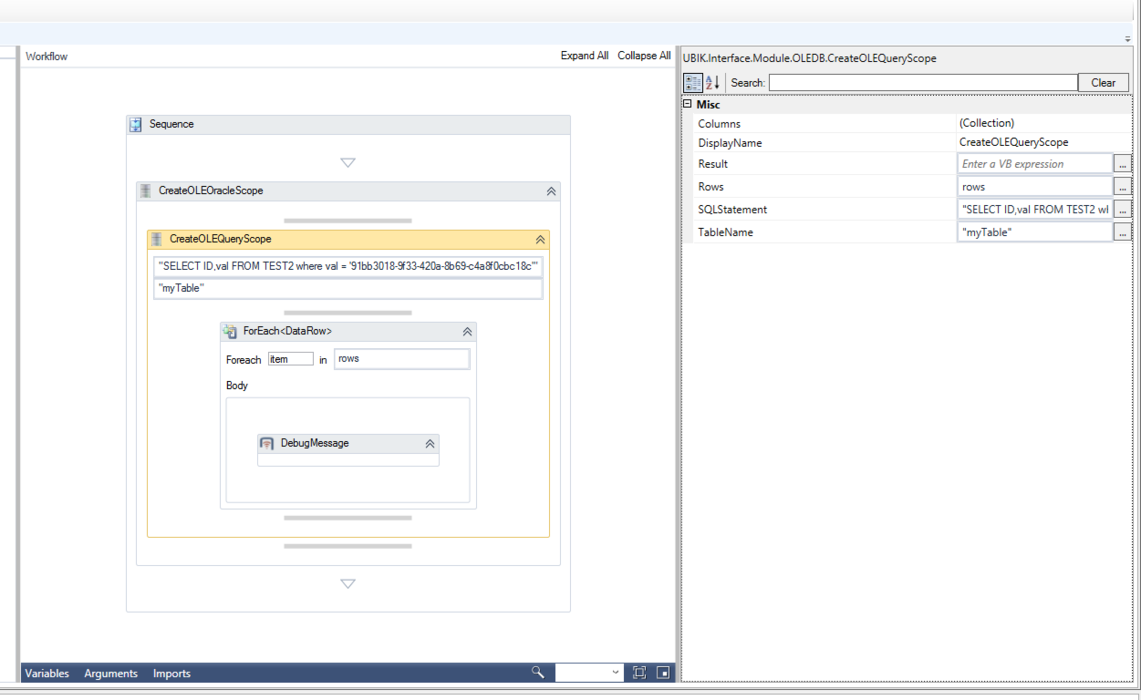Difference between revisions of "Activity:CreateOLEQueryScope (Activity)"
| Line 1: | Line 1: | ||
| + | The CreateOLEQueryScope Activity provides access to a tables/views within an OLE compliant database by defining a SQL statement. It is typically nested within a [[Activity:CreateOLEDBScope (Activity)|CreateOLEDBScope]] Activity. | ||
| + | |||
| + | =Description= | ||
{{ActivityInfoBox | {{ActivityInfoBox | ||
| title = Create OLE Query Scope | | title = Create OLE Query Scope | ||
| Line 10: | Line 13: | ||
}} | }} | ||
| − | + | ===Arguments=== | |
| − | + | ||
| − | ==Arguments== | + | |
{| class="wikitable sortable" | width = "50%" | {| class="wikitable sortable" | width = "50%" | ||
| Line 29: | Line 30: | ||
|} | |} | ||
| − | ==Usage== | + | ===Usage=== |
This activity is used to access a table(s) or view(s) within a valid OLE DB Scope. The data access is defined by a dtabase SQL Statement. | This activity is used to access a table(s) or view(s) within a valid OLE DB Scope. The data access is defined by a dtabase SQL Statement. | ||
| Line 36: | Line 37: | ||
In the case of a more complex statement where you include more than one table (example: SELECT * FROM TABELE1, TABELE2 where TABELE1.PK = TABELE2.pk ....) then you have to define a unique tablename defining the access indicator for the OLE system. | In the case of a more complex statement where you include more than one table (example: SELECT * FROM TABELE1, TABELE2 where TABELE1.PK = TABELE2.pk ....) then you have to define a unique tablename defining the access indicator for the OLE system. | ||
| − | + | =Example= | |
The CreateOLEQueryScope activity, as used in the larger example "Read MetaClass names from UBIK database": | The CreateOLEQueryScope activity, as used in the larger example "Read MetaClass names from UBIK database": | ||
[[File:UI_Activity_CreateOLEQueryScope.PNG|x700px]] | [[File:UI_Activity_CreateOLEQueryScope.PNG|x700px]] | ||
| + | |||
| + | <headertabs /> | ||
==See also== | ==See also== | ||
| Line 46: | Line 49: | ||
[[Category:OLE]] | [[Category:OLE]] | ||
| − | |||
Revision as of 12:33, 23 February 2015
The CreateOLEQueryScope Activity provides access to a tables/views within an OLE compliant database by defining a SQL statement. It is typically nested within a CreateOLEDBScope Activity.

